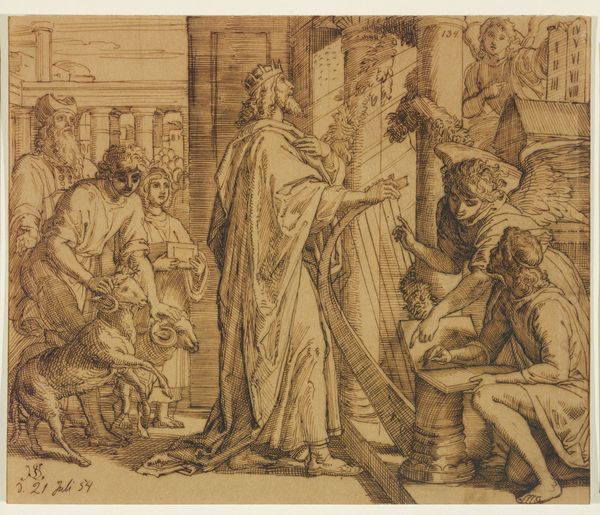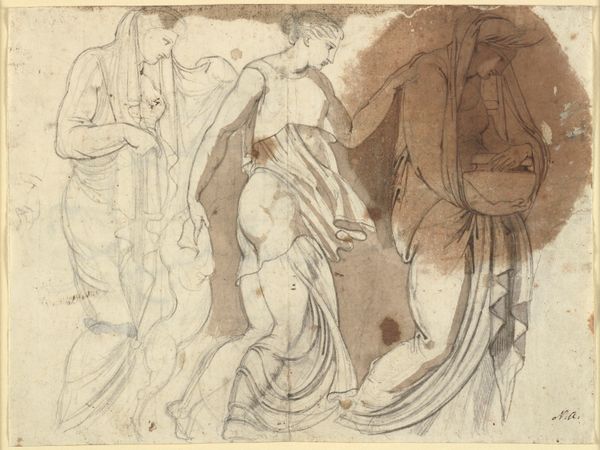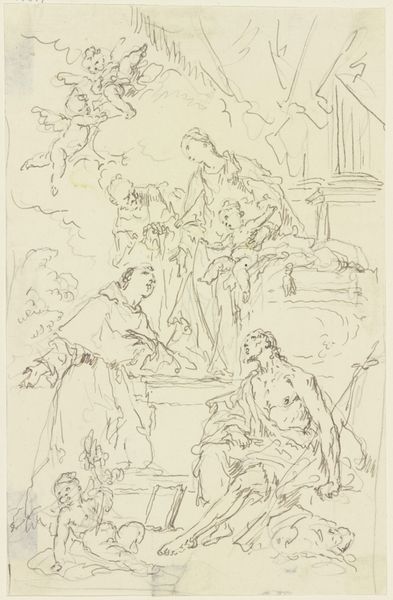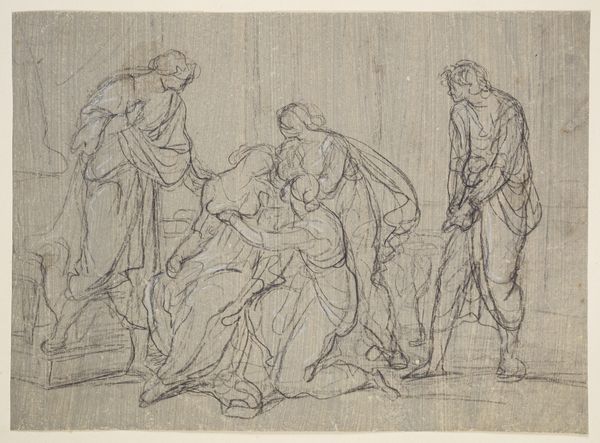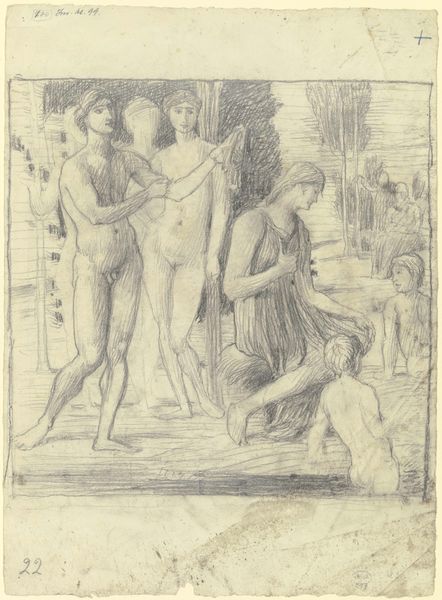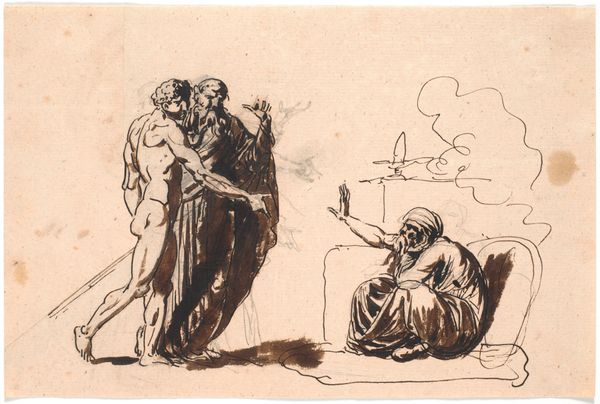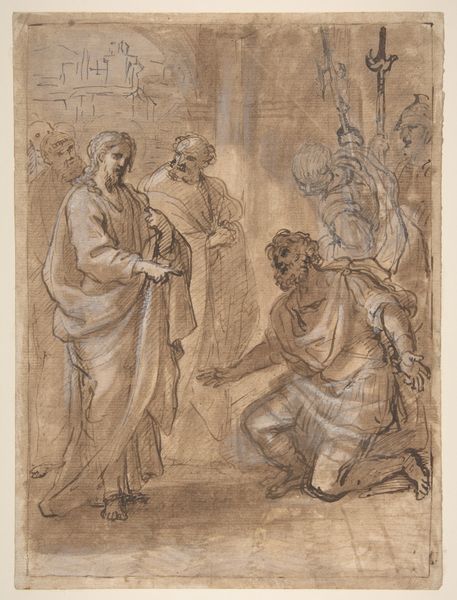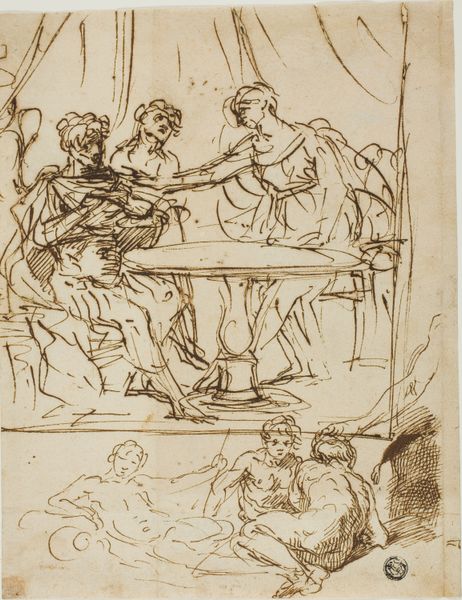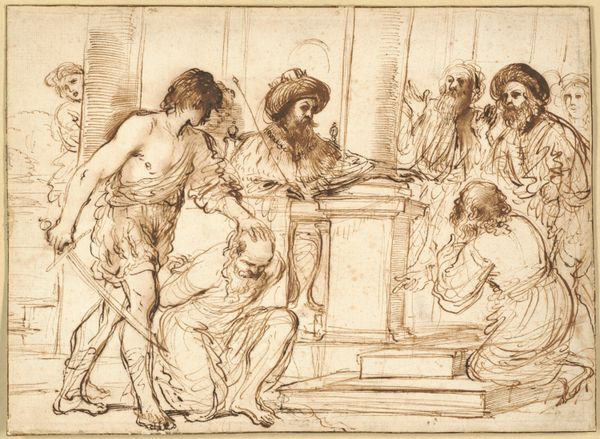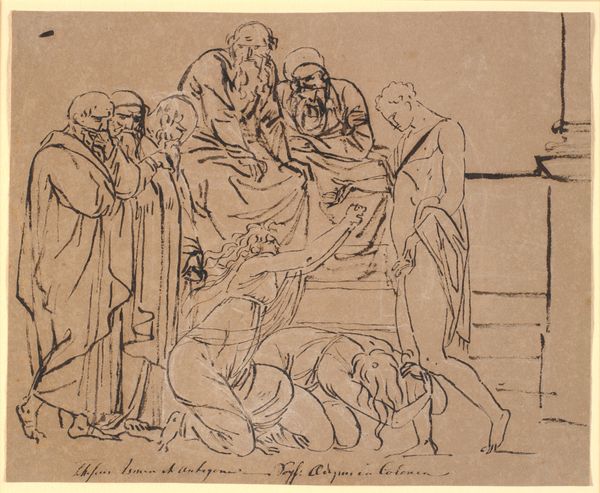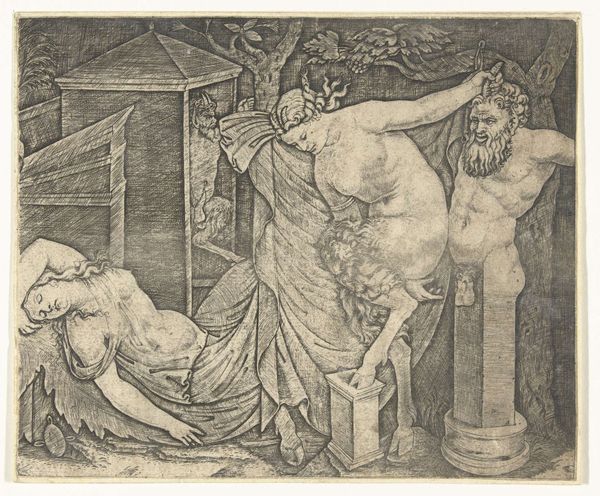
drawing, paper, ink, pencil
#
portrait
#
drawing
#
ink drawing
#
16_19th-century
#
narrative-art
#
paper
#
ink
#
pencil
#
symbolism
#
history-painting
Copyright: Public Domain
Editor: This is Fritz Boehle's "Illustration zu Dantes Göttlicher Komödie" from 1895, an ink and pencil drawing. I am struck by the linear quality of the figures, and the clear contrast the artist achieves between the stark foreground and the mountainous landscape in the background. What visual elements do you consider most significant? Curator: Formally speaking, Boehle’s economy of line is noteworthy. Consider how he uses hatching to delineate form, achieving volume and shadow without resorting to tonal gradations. The strategic placement of the figures along a horizontal axis and its impact on the composition's spatial dynamics is critical for understanding Boehle’s visual strategy here. Does this arrangement remind you of any familiar compositional approaches? Editor: Now that you mention it, it's reminiscent of a classical frieze in its horizontal presentation of figures. Is there a symbolic intent related to the organization of space? Curator: Indeed. The arrangement highlights relationships of power and reverence. Note the relative height and stillness of the seated angel and the contrast between him and Dante, who occupies a liminal space between foreground and background. Do you notice the tonal contrast, the angel illuminated while Dante and even Adam emerge more dimly? Editor: Absolutely, and Adam stands adjacent to what appears to be an ionic pillar and landscape elements, suggesting the classical roots and physical temptations that Dante transcends in his journey. It's amazing how effectively Boehle used limited color and primarily linear elements to highlight and strengthen the meaning of this complex and dense source material. Curator: Precisely. Through precise draughtsmanship, Boehle's artwork skillfully presents the Divine Comedy as a sequence of visual cues, asking viewers to contemplate symbolic form, divine influence and human agency through minimal tonal or chromatic interventions. This piece emphasizes structure to achieve profound expressiveness.
Comments
No comments
Be the first to comment and join the conversation on the ultimate creative platform.

